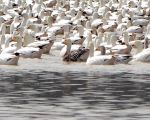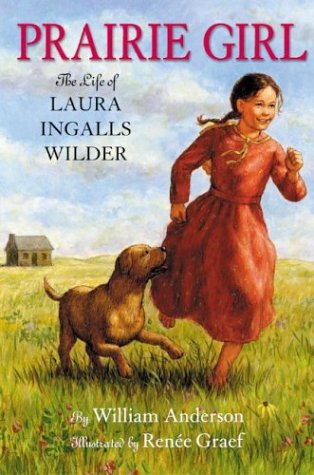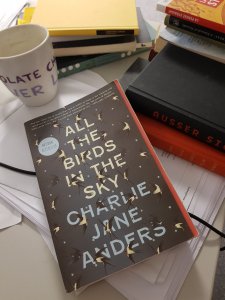 Blue Goose
Blue Goose
 White Under Tail
White Under Tail
Both Ross’s geese (Chen rossii) and snow geese (Chen caerulescens) exhibit “blue” morphs or color variants. The dark forms of these two Arctic white geese are very uncommon. After Leonard and I found a blue morph Ross’s goose earlier this month ( see “Blue Morph Ross’s Goose posted 03-03-2017), finding a “blue” snow goose became a quest.
After weeks of searching, spurred on by the fact that the white geese soon will be migrating to the Arctic tundra for the summer, we finally saw a blue morph snow goose on the flooded rice fields near Nubieber CA (Lassen County).
Blue morph snow geese have dark brown or blackish bodies, white heads and necks, white under the tail and black greater covert wing feathers fringed with a white border. The “blue” goose was previously considered a separate species but now are classified as variants of the same species.
The “blue” color is controlled by a single gene with dark color partially dominant over white. Thus the mating of a “pure” dark goose carrying homozygous alleles to a white goose or the mating of two “pure” dark geese results in all dark offspring. Two white snow geese always produce white offspring. Two dark geese that have heterozygous alleles (not “pure”) that mate have mostly dark offspring but a few are white.
A snow goose most often select a mate resembling its parents’ color. Snow geese hatched from a mixed pair (one white and one dark) will choose a partner of either color.
Over the years Leonard and I casually looked for blue Ross’s and snow geese without success. Our determined efforts this spring proved successful.
Like this:Like Loading...





